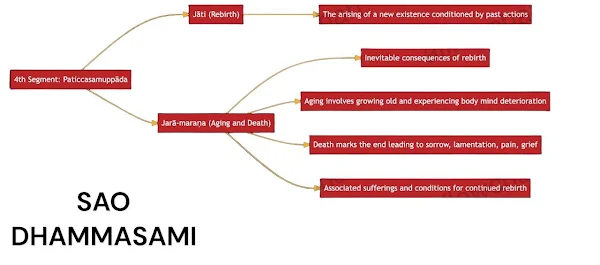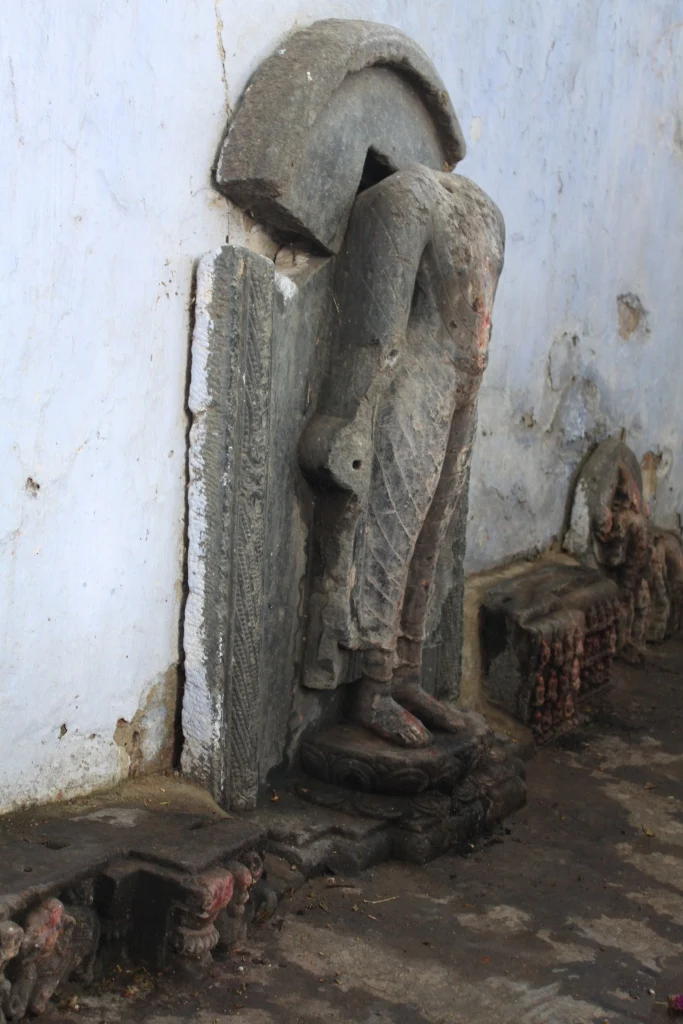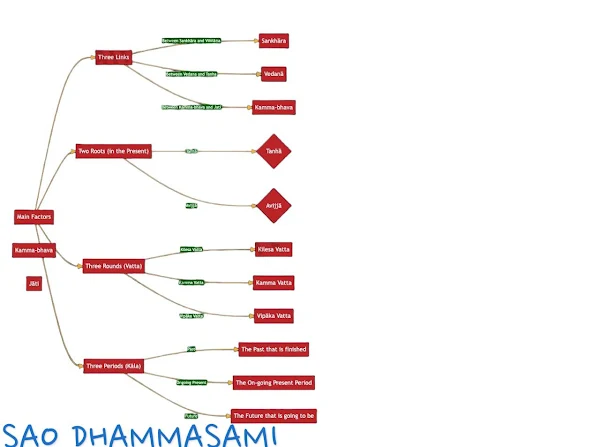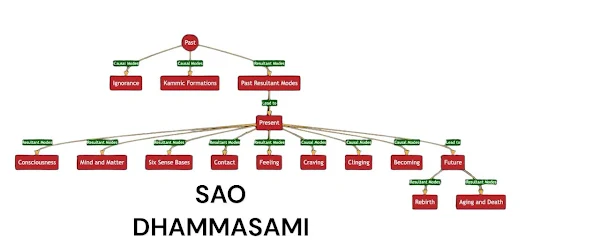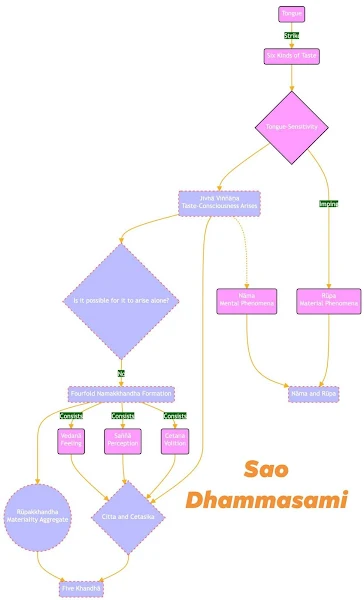anekajātisaṃsāraṃ sandhāvissaṃ anibbisaṃ gahakāraṃ gavesanto dukkhājāti punaṃppunaṃ sabbā te phāsukā aggā gahakūṭaṃ visaṅkhataṃ visaṅkhāra gataṃ cittaṃ taṇhānaṃ khaya majjyagā
ဝန္ဒာမိ
Saturday, June 01, 2024
Inscription at the Image of Mahākassapa in Silao
The Cycle of Suffering
Thursday, May 30, 2024
The Sammitiya Sect: Mathura's Dominant Buddhist School
The Fracturing of the Sangha
After 200 BE (3rd century BCE), Buddhism splintered into over 18 sects, prompting Emperor Ashoka to issue edicts (found at Sarnath, Sanchi, Lauriya) forbidding monastic division (Sangha-bheda). Yet, post-Ashoka, fragmentation resumed—by the 7th century, Xuanzang noted the Sammitiyas as Mathura’s dominant school.
Archaeological Proof: The Gaughat Well Inscription
Discovered in 1863 CE (2406 BE) by Alexander Cunningham near Mathura, this Bodhisattva statue base bears a hybrid Sanskrit-Prakrit inscription:
"This Bodhisattva image was installed—along with [donor’s] parents, preceptor Dharmaka, and male/female disciples—at Shri Vihara, in honor of the Sammitiya teachers and all Buddhas."
Why This Matters:
Sectarian Stronghold: Confirms the Sammitiyas’ dominance in Mathura, a Kushan-era hub.
Social Network: Shows lay-devotee families (parents, disciples) funding art, blending domestic and monastic life.
Doctrinal Clue: The Sammitiyas (Pudgalavādins) believed in a "person" (pudgala) neither identical to nor separate from the five aggregates—a controversial middle path.
Sectarian Stronghold: Confirms the Sammitiyas’ dominance in Mathura, a Kushan-era hub.
Social Network: Shows lay-devotee families (parents, disciples) funding art, blending domestic and monastic life.
Doctrinal Clue: The Sammitiyas (Pudgalavādins) believed in a "person" (pudgala) neither identical to nor separate from the five aggregates—a controversial middle path.
Xuanzang’s Corroboration
The Chinese pilgrim recorded:
Mathura had 20 Sammitiya monasteries but only 5 for other sects.
Their "Pudgala" doctrine was debated across India, yet they thrived here.
Legacy of a Lost School
Four Inscriptions: Mathura’s ruins yield three more Sammitiya-linked artifacts, now in the Mathura Museum.
Final Decline: By 1200 CE, their texts vanished—surviving only in critiques by rivals like Vasubandhu.
Four Inscriptions: Mathura’s ruins yield three more Sammitiya-linked artifacts, now in the Mathura Museum.
Final Decline: By 1200 CE, their texts vanished—surviving only in critiques by rivals like Vasubandhu.
Did You Know? The Sammitiyas were called "Vātsīputrīyas" in Sri Lanka—their name varied by region!
(Source: Cunningham’s Archaeological Survey Reports, Vol. 1)
"Even These Fragments Speak Volumes"
The Sarvāstivādin Doctrine: "All Things Exist"
From 200 BE (3rd century BCE), Buddhism split into 18 schools over doctrinal disputes. Among them, the Sarvāstivādins (Sanskrit: Sarvāstivāda; Pali: Sabbatthivāda) asserted:
"Sarva" (all) + "asti" (exists) + "vāda" (doctrine) = "The theory that all phenomena (past, present, future) have real existence."
Contrasted with Theravada’s "momentariness" (only the present exists).
Archaeological Proof at Mathura (1863 CE / 2406 BE)
Alexander Cunningham’s excavation at Katra Mound, Mathura uncovered a Buddha statue base with a hybrid Sanskrit-Prakrit inscription:
"This Bodhisattva image was donated by the laywoman Nanda of the Kshatrapa clan, for the welfare of all beings—[dedicated] to the teachers of the Sarvāstivādin school."
Why This Matters:
Sectarian Identity: Confirms Sarvāstivādin dominance in Mathura, a Kushan-era hub.
Lay Devotion: Shows women like Nanda patronized art, bridging caste (Kshatrapa) and spiritual worlds.
Linguistic Shift: Uses Sanskrit (not Pali), reflecting the school’s scholarly bent.
The Bigger Picture
Global Reach: By 400 CE, Sarvāstivādin texts reached China via Silk Road, shaping Mahayana.
Legacy: Their Abhidharma texts (e.g., Mahāvibhāṣā) remain key in Tibetan Buddhism.
Fragmentary but Profound: Though only a base survives, its 4 lines reveal:
A laywoman’s piety.
A sect’s philosophical stance.
The multicultural fabric of ancient Mathura.
(Source: Cunningham’s reports, now in the Indian Museum, Kolkata)
Did You know? The Kshatrapas were Saka rulers—proof of Buddhism’s appeal across ethnic lines!
Monday, May 27, 2024
The Guardians of Jetavana Monastery During Kanishka's Reign
Key Discovery: The Kanishka-Era Inscription
In 1862 (2406 BE), archaeologist Alexander Cunningham unearthed a headless red sandstone Buddha statue at Sahet-Mahet (ancient Sravasti), bearing a pivotal Brahmi inscription:
"In the 19th year of Mahārāja Devaputra Kanishka, this Bodhisattva [image], along with an umbrella and incense, was donated by the Tripitaka-master Bhikshu Bala, disciple of Bhikshu Pushyavuddhi, at the Buddha’s walking path (Chankramana) near the Kosambakuti in Sravasti—for the teachers of the Sarvāstivādin school."
5 Critical Revelations:
Royal Patronage: Confirms Kanishka’s rule (c. 127–150 CE) over Sravasti.
Sacred Geography: Pinpoints the Kosambakuti (Buddha’s monsoon retreat) within Jetavana.
Sectarian Identity: The monastery was managed by the Sarvāstivādins ("All Exists" school), dominant in North India.
Monastic Lineage: Names two monks—Bala (a Tripitaka scholar) and his teacher Pushyavuddhi.
Parallel Donations: Similar statues were installed at Mrigadava (Deer Park), showing the sect’s pan-Gangetic influence.
Historical Context
Xuanzang’s Account (630 CE): Noted Jetavana’s decline but mentioned Ashokan pillars with elephant/lion capitals.
Queen Kumaradevi’s Restoration (5th c. CE): Revived the site under Abbot Buddhabhattaraka, but by 700 CE, it was abandoned.
Why Sarvāstivādins?
Doctrine: Their belief in the reality of all dharmas (past/present/future) aligned with Kanishka’s Fourth Buddhist Council (Kashmir).
Artistic Legacy: The statue’s Greco-Buddhist style matches Gandharan workshops under Kushan patronage.
Where to See the Artifact
The inscribed statue is displayed at the Indian Museum, Kolkata (Gallery No. 4).
Did You Know? The Kosambakuti was where the Buddha delivered the Kosambiya Sutta—on monastic harmony!
(Source: Epigraphia Indica, Vol. 8, 1905–06, p. 181)
Sunday, May 26, 2024
The Sarvāstivādin Legacy at Kurkihar: A Bronze Age Buddhist Treasury
Discovery of a Lost Monastery
In 1863 CE (2406 BE), Norwegian epigraphist Prof. Sten Konow uncovered a trove of Buddhist art at Kurkihar, near Gaya, Bihar:
231 bronze statues—the largest collection of ancient Buddhist metalwork in India.
Key Finds: Buddha images, Bodhisattvas, and Tara deities, now displayed at Patna Museum.
Historical Context: A major Sarvāstivādin center during the Pala dynasty (8th–12th c. CE).
The Inscribed Black Stone Buddha
A varada mudra (blessing gesture) statue bears two inscriptions:
On the Halo: The Ye Dharma verse in Sanskrit—core Buddhist doctrine.
On the Base:
"Siddhaṃ... Sarvāstivādin deyadharmo yaṃ Sthavira Maradevasya"
(“This religious gift is by the Elder Maradeva of the Sarvāstivādin school.”)
Significance:
Confirms Sarvāstivādin presence in Magadha, their doctrinal heartland.
The sect’s name means "All Exists"—they believed past/future dharmas are real.
Current Location: British Museum, London (Room 33).
Why Kurkihar Matters
Sectarian Hub: The Sarvāstivādins dominated North India (Mathura, Kashmir, Gandhara) but this find proves their influence in Magadha.
Artistic Mastery: The bronzes show Pala-era metallurgy—a blend of Gupta elegance and Tantric iconography.
Global Diaspora: Their texts reached China via Kumārajīva, shaping East Asian Buddhism.
Did You Know? The Sarvāstivāda Vinaya was the only monastic code in 7th-century Xinjiang!
(Note: The "Elder Maradeva" may be the same teacher cited in Vasubandhu’s Abhidharmakośa.)
